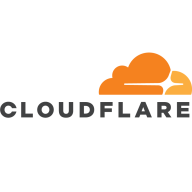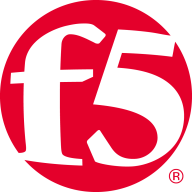


NGINX App Protect and Azure Web Application Firewall are competitors in the web application security space. Azure appears to have the upper hand due to its ease of integration within its ecosystem and cost-effective pricing options.
Features: NGINX App Protect is known for its flexibility, reverse proxy capabilities, and open-source nature. It is effective in managing HTTP sessions and traffic inspection while offering command-line interface support. Azure Web Application Firewall is highlighted for its easy configuration, seamless Azure ecosystem integration, and effective request filtering with custom rules.
Room for Improvement: NGINX App Protect could improve its flexibility in configuration and face challenges with integration and throughput. It also needs better dashboard views and simpler policy management. Azure Web Application Firewall could enhance its documentation and provide clearer deployment tutorials. It would benefit from more affordable pricing plans for medium to small enterprises.
Ease of Deployment and Customer Service: NGINX App Protect supports both on-premises and cloud environments but has inconsistent technical support. Azure Web Application Firewall is easier to deploy within Azure with generally good support, though improvements are needed for non-Microsoft environments.
Pricing and ROI: NGINX App Protect offers varied pricing based on needs and is considered expensive, though beneficial for network security. Azure Web Application Firewall offers flexible, enterprise-friendly pricing, making it attractive for larger deployments, though attention to cost management is essential.
For the small project I was working on, using the basic tier provided a huge improvement at zero cost.
In terms of return on investment with Cloudflare, it costs my time to set them up, but basically once they're set up, it's done.
Recently, they have been under serious attack with major exploits, such as Log4j, affecting Fortinet and Palo Alto, and even Cisco and VMware.
AI-based recommendations save on time and money.
Cloudflare does not offer hands-on technical support to fix customer problems but rather a self-service model.
I would rate the technical support with Cloudflare as excellent every time I've had to call them.
I have primarily worked not with the tool's customer support but with the product's sales engineers and technical sales engineers, who seem to know their stuff.
They are good at troubleshooting and configuring things.
I am very satisfied with the response from Microsoft dedicated architects if it happens that I have to call for their support.
I reached out to their support, and they helped me resolve the issue effectively.
They were quick and efficient when we had issues.
It is a SaaS tool, but the fact that they have workloads deployed across the world proves that it is a highly scalable tool.
The tool offers very good performance, even during high-traffic periods.
I rate the solution’s scalability an eight out of ten.
Some Azure applications, like the web application firewall, require a certain level of SKU for hosting setup.
For our company, Azure Web Application Firewall works effectively for scalability.
I rate the solution’s stability an eight out of ten.
The service is very stable with no impacts during high-traffic periods.
Very rarely do I see any latency issues.
It is a quality solution, and I would rate its stability as eight out of ten.
Despite these challenges, overall, Cloudflare remains the preferred solution compared to Azure, AWS CloudFront, and Google Cloud Armor.
Areas like how assessment, discovery, and payload are dealt with and how it all comes into your organization can be considered when trying to make suggestions to Cloudflare for improvements.
There are some performance considerations when it comes to dynamic content that involves fetching data from databases or using APIs.
Upgrading the platform regularly is necessary for security, however, frequent updates every six months or year from Azure can be a maintenance overhead.
The pricing needs improvement, and I think for beginners it will be a little bit complicated, so the ease of use could be enhanced.
There was more information from F5 regarding hardware requirements and specifications to deploy the service.
I find it to be cheap.
I rate the product’s pricing a five out of ten, where one is cheap, and ten is expensive.
The tool is a premium product, so it is very expensive.
It is even a lower cost compared to AWS and GCP.
Sometimes, when opting for a higher SKU, it's not the WAF itself that's costly but the additional requirements.
I would place Azure Web Application Firewall at an eight on a scale from one to 10, with one being cheap and 10 being expensive.
The most valuable features of the solution are performance and security.
Techniques like minification and image compression reduce the size of assets, leading to better performance and faster user load times.
The solution has been able to compare it to the market, and I think the product has taken great strides in automating quite a bit of things, and they use a lot of AI.
With Microsoft, everything is within a single suite, making it easier to configure and plan.
It is almost impossible to access these assets from outside, requiring a very skilled attacker to obtain asset tokens of a customer using Azure.
It integrates effectively with things such as Sentinel and Defender for Cloud, so mostly it's the analytics and now the AI capabilities that have been introduced with Co-pilot.
The most valuable feature is the ability to operate in a DevOps environment and to be configured through API and pipeline by the developers themselves.
Detecting bots and blocking IPs have proven effective for securing applications.

| Company Size | Count |
|---|---|
| Small Business | 46 |
| Midsize Enterprise | 8 |
| Large Enterprise | 25 |
| Company Size | Count |
|---|---|
| Small Business | 6 |
| Large Enterprise | 12 |
| Company Size | Count |
|---|---|
| Small Business | 8 |
| Midsize Enterprise | 5 |
| Large Enterprise | 11 |
Cloudflare enhances web performance and security with features like CDN caching and DDoS mitigation while providing easy DNS management and intuitive setup through its user-friendly dashboard.
Cloudflare is recognized for its comprehensive web security and performance solutions. Speed improvements are achieved through caching mechanisms and DDoS protection, combining ease of DNS management with flexible page rules. The robust analytics and threat insight tools provide valuable data, assisted by a user-friendly dashboard allowing quick setup and configuration. An API offers dynamic DNS settings ensuring low latency and high performance across the globe.
What are Cloudflare's key features?Cloudflare finds utility across industries for DNS management and defense mechanisms. Its content delivery network assures fast content distribution and fortified security. Businesses integrate features like web application firewalls, load balancing, end-to-end SSL, and zero trust to protect websites from cyber threats while ensuring resilience and reliable performance.
Azure Web Application Firewall (WAF) provides centralized protection of your web applications from common exploits and vulnerabilities. Web applications are increasingly targeted by malicious attacks that exploit commonly known vulnerabilities. SQL injection and cross-site scripting are among the most common attacks.
To learn more about our solution, ask questions, and share feedback, join our Microsoft Security, Compliance and Identity Community.
NGINX App Protect application security solution combines the efficacy of advanced F5 web application firewall (WAF) technology with the agility and performance of NGINX Plus. The solution runs natively on NGINX Plus and addresses some of the most difficult challenges facing modern DevOps environments:
NGINX App Protect offers:
We monitor all Web Application Firewall (WAF) reviews to prevent fraudulent reviews and keep review quality high. We do not post reviews by company employees or direct competitors. We validate each review for authenticity via cross-reference with LinkedIn, and personal follow-up with the reviewer when necessary.